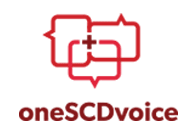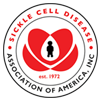Trusted Resources: Evidence & Education
Scientific literature and patient education texts
Hydroxyurea effectiveness in children and adolescents with sickle cell anemia: A large retrospective, population-based cohort
source: American Journal of Hematology
year: 2017
authors: Quarmyne MO, Dong W, Theodore R, Anand S, Barry V, Adisa O, Buchanan ID, Bost J, Brown RC, Joiner CH, Lane PA
summary/abstract:The clinical efficacy of hydroxyurea in patients with sickle cell anemia (SCA) has been well established. However, data about its clinical effectiveness in practice is limited. We evaluated the clinical effectiveness of hydroxyurea in a large pediatric population using a retrospective cohort, pre-post treatment study design to control for disease severity selection bias. The cohort included children with SCA (SS, Sβ0 thalassemia) who received care at Children’s Healthcare of Atlanta (CHOA) and who initiated hydroxyurea in 2009-2011. Children on chronic transfusions, or children with inadequate follow up data and/or children who had taken hydroxyurea in the 3 years prior were excluded. For each patient healthcare utilization, laboratory values, and clinical outcomes for the 2-year period prior to hydroxyurea initiation were compared to those 2 years after initiation. Of 211 children with SCA who initiated hydroxyurea in 2009-2011, 134 met eligibility criteria. After initiation of hydroxyurea, rates of hospitalizations, pain encounters, and emergency department visits were reduced by 47% (<0.0001), 36% (P = 0.0001) and 43% (P < 0.0001), respectively. Average hemoglobin levels increased by 0.7 g/dl (P < 0.0001). Hydroxyurea effectiveness was similar across gender, insurance types and age, although there was a slightly greater reduction in hospitalizations in younger children.
organization: Aflac Cancer and Blood Disorders Center, Children's Healthcare of Atlanta; Emory University School of Medicine, Atlanta; Connance, Inc, Waltham, Massachusetts; Morehouse School of Medicine, AtlantaDOI: 10.1002/ajh.24587
read more full text
Related Content
-
Researchers raise funds for phase 1 trial to test medical cannabis in sickle cell diseaseThe Sickle Cell Foundation of Georgia ...
-
Preclinical Data on Proprietary AKT Inhibitor, ARQ 092, Demonstrating Effectiveness in the Treatment of Sickle Cell ...ArQule, Inc. (Nasdaq: ARQL) today announ...
-
Our Healthcare System Abandons Adult Sickle Cell PatientsWhen Janoi Burgess was a child, he thoug...
-
Sickle Cell Disease: Managing PainCurrently, sickle cell disease has no wi...
-
Improving the Lives of People with Sickle Cell Diseasehttps://www.youtube.com/watch?v=NPaV0glX...
-
Robert Molokie, MDDr. Robert Molokie is a hematologist and...
-
University of Pittsburgh School of MedicineThe University of Pittsburgh School of M...
To improve your experience on this site, we use cookies. This includes cookies essential for the basic functioning of our website, cookies for analytics purposes, and cookies enabling us to personalize site content. By clicking on 'Accept' or any content on this site, you agree that cookies can be placed. You may adjust your browser's cookie settings to suit your preferences. More Information
The cookie settings on this website are set to "allow cookies" to give you the best browsing experience possible. If you continue to use this website without changing your cookie settings or you click "Accept" below then you are consenting to this.




 +myBinder
+myBinder
